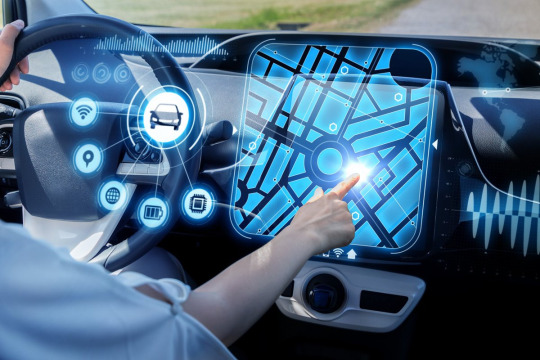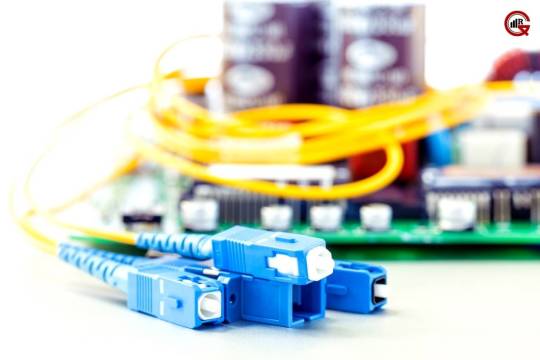#VehicleConnectivity
Explore tagged Tumblr posts
Text
#Rohde & Schwarz#eCall#AutomotiveSafety#EN17240#5G#Telematics#VehicleConnectivity#AutoTech#MobileTesting#CMW500#Timestech#electronicsnews#technologynews
0 notes
Text
Vehicle Security Market is Anticipated to Witness High Growth Owing to Rising Cases of Automotive Theft
The vehicle security market involves products and solutions that help secure vehicles against theft. Some key products in this market include immobilizers, vehicle alarms, steering locks, and central locking systems. The need for vehicle security systems is increasing owing to the rising number of automotive thefts globally every year. According to statistics, a vehicle is stolen every 38 seconds in the United States alone. Additionally, vehicles have become more expensive and technically advanced over the years, further driving the demand for adequate protection.
Get More Insights on Vehicle Security Market https://www.patreon.com/posts/vehicle-security-129978701

#VehicleSecurityMarket#ConnectedVehicleTechnologies#AdvancedVehicleSecuritySystems#Telematics#VehicleConnectivity#CoherentMarketInsights
0 notes
Text
Automotive Smart Antenna Market: Key Drivers Fueling Growth in Vehicle Connectivity and Innovation
The automotive smart antenna market has witnessed rapid growth and development in recent years due to technological advancements, evolving consumer preferences, and the increasing need for enhanced vehicle connectivity. Smart antennas are crucial components in modern vehicles, supporting various connectivity functions such as GPS, Bluetooth, Wi-Fi, and cellular communication. They are designed to improve signal quality, enhance data transfer speeds, and enable seamless communication between vehicles, infrastructure, and other connected devices. The following key drivers are fueling the growth of the automotive smart antenna market.

1. Increasing Demand for Vehicle Connectivity
As the automotive industry becomes more connected, the demand for reliable and high-performance communication systems within vehicles is escalating. Smart antennas play a vital role in ensuring uninterrupted and high-quality communication between a vehicle's electronic systems and external networks. These antennas support technologies like 5G, V2X (Vehicle-to-Everything) communication, GPS, and infotainment systems, all of which are essential for providing a seamless driving experience. As automotive manufacturers continue to integrate advanced connectivity features in their vehicles, the demand for smart antennas is expected to rise.
2. Technological Advancements in Automotive Electronics
The automotive sector is undergoing a significant transformation with the integration of advanced electronic systems that enhance vehicle safety, efficiency, and user experience. Smart antennas are designed to meet the growing need for improved communication systems that support these new technologies. The development of high-frequency antennas, multi-band antennas, and advanced antenna systems has enabled automotive manufacturers to offer vehicles with enhanced connectivity capabilities. As the automotive industry continues to innovate with technologies such as autonomous driving, electric vehicles (EVs), and advanced driver assistance systems (ADAS), the role of smart antennas in facilitating seamless communication becomes even more critical.
3. Growth of Autonomous Vehicles
The rise of autonomous vehicles (AVs) is one of the most significant drivers of the automotive smart antenna market. Autonomous vehicles rely heavily on constant communication with other vehicles, infrastructure, and cloud-based systems to navigate and make real-time decisions. Smart antennas are essential for enabling these vehicles to communicate with their surroundings through V2X networks. V2X communication includes vehicle-to-vehicle (V2V), vehicle-to-infrastructure (V2I), and vehicle-to-pedestrian (V2P) communication, which helps prevent accidents, improve traffic flow, and ensure the safe operation of autonomous vehicles. As autonomous driving technology continues to evolve, the need for reliable and efficient smart antenna systems will only increase.
4. Rising Consumer Preference for In-Vehicle Infotainment Systems
Consumers are increasingly seeking advanced in-vehicle infotainment systems that offer a wide range of connectivity options, including internet browsing, streaming, navigation, and voice-activated services. To support these features, automotive manufacturers are integrating multiple communication systems, including smart antennas, into their vehicles. The need for high-quality and stable signal reception to ensure uninterrupted performance of these infotainment systems is driving the adoption of smart antennas in vehicles. With the growing trend of connected and entertainment-focused vehicles, the demand for smart antennas that provide enhanced connectivity is expected to grow.
5. Government Regulations and Safety Standards
Government regulations and safety standards are playing a pivotal role in driving the adoption of advanced communication technologies in vehicles. Many countries are mandating the implementation of certain safety features, such as collision avoidance systems, real-time traffic updates, and emergency communication systems, which require robust communication networks. Smart antennas are integral to the functioning of these systems by enabling reliable data exchange and ensuring compliance with safety regulations. As governments around the world continue to implement stricter safety standards and regulations, the demand for smart antennas in automotive applications will likely grow.
6. Integration of 5G Technology
The rollout of 5G networks is a game-changer for the automotive industry, enabling faster data transfer speeds, lower latency, and improved network reliability. 5G technology will enhance vehicle-to-vehicle (V2V) communication, real-time data exchange, and autonomous driving capabilities, all of which rely on high-performance smart antennas. The ability to support 5G communication is becoming a critical requirement for modern vehicles, particularly for those equipped with autonomous driving features and advanced driver assistance systems (ADAS). The need for smart antennas that can support 5G connectivity is, therefore, a major driver of the market's growth.
7. Focus on Fuel Efficiency and Space Optimization
Automotive manufacturers are increasingly focusing on optimizing the design and performance of vehicles, including antenna systems. Traditional antenna systems, such as external whip antennas, are bulky and can negatively impact a vehicle's aesthetics and aerodynamics. Smart antennas, on the other hand, are compact, integrated, and can be embedded into various parts of the vehicle, such as the roof, windshield, or side mirrors, offering a sleek and space-efficient solution. The growing demand for fuel-efficient and aesthetically pleasing vehicles has led manufacturers to adopt smart antennas, which offer both space optimization and improved performance.
8. Growing Adoption of Electric Vehicles (EVs)
The transition to electric vehicles (EVs) is another factor contributing to the growth of the automotive smart antenna market. EVs typically require more advanced communication systems to manage various functions such as charging, navigation, and remote diagnostics. Smart antennas are vital in supporting the connectivity needs of electric vehicles, particularly as EVs become more integrated into smart city infrastructure. As the global market for EVs continues to expand, the demand for smart antennas capable of supporting these advanced systems will continue to rise.
Conclusion
The automotive smart antenna market is poised for significant growth, driven by advancements in connectivity, government regulations, consumer demand for advanced infotainment systems, and the development of autonomous and electric vehicles. As automotive technologies continue to evolve, smart antennas will play an essential role in ensuring seamless communication and enhancing the overall driving experience. With the increasing demand for connected and intelligent vehicles, the automotive smart antenna market is expected to continue expanding, offering significant opportunities for manufacturers and suppliers in the coming years.
0 notes
Text
#SoftwareDefinedVehicle#SDVMarket#ConnectedCars#AsiaPacificAutomotive#FutureOfMobility#AutonomousVehicles#EVTechnology#CarSoftware#AutomotiveInnovation#SDVTrends#SmartMobility#CloudCars#VehicleConnectivity#APACAutomotive#NextGenVehicles
0 notes
Text
Connected Cars Market Strategic Assessment: Market Size, Share, and Growth Projections
The global connected car market size is expected to reach USD 243.75 billion by 2030, registering a CAGR of 13.4% from 2023 to 2030, according to a new report by Grand View Research, Inc. Surging consumer demand, the constant need for connectivity, increased dependency on technology and the growing number of tech-savvy people are some of the factors expected to boost global connected car market growth.
Connected cars offer connectivity on wheels providing comfort, performance along with safety and security. Such advanced technology enables the driver and passengers to connect with various online platforms that facilitate real-time communication on the go.
The connected car market has the potential to significantly boost revenues of automobile manufacturers over the next five to seven years. Car manufacturers are expected to deliver the right mix of application and product packages for the right customers, and must systematically invest in R&D if they are willing to maintain their technological leadership. Increasing regulations by governments and transportation authorities for the installation of advanced safety and vehicle to vehicle communications systems are expected to positively impact industry growth.
For More Details or Sample Copy please visit link @: Connected Car Market Report
Connected Car Market Report Highlights
The safety segment is estimated to grow significantly over the forecast period. The rise of autonomous driving technologies has also contributed to the growth of the safety segment in the market.
The driver assistance segment accounted for the largest revenue share of 36.1% in 2022 and is estimated to register the fastest CAGR of 15.6% over the forecast period. Driver assistance includes several advanced technologies that help improve the vehicle's performance.
Asia Pacific is expected to register the fastest CAGR of 15.3% over the forecast period. Increasing smartphone penetration, deployment of high-speed internet services, and declining average selling price in the region are expected to push the sales of such smart vehicles.
Gain deeper insights on the market and receive your free copy with TOC now @: Connected Car Market Report
We have segmented the global connected car market on the basis of on application, and region.
#ConnectedCars#AutomotiveTechnology#SmartVehicles#VehicleConnectivity#V2XCommunication#Telematics#InfotainmentSystems#ADAS#AutomotiveInnovation#SmartMobility#IoTInAutomotive#AutonomousVehicles#VehicleData#DigitalTransformation#AutomotiveIndustry#FutureOfTransportation
0 notes
Text
The Role Of Automotive Connectors

In today’s automotive industry, innovation is not just confined to engine power or design aesthetics; it extends to the very infrastructure that connects the various components of a vehicle. Automotive connectors, often overlooked but essential components, play a pivotal role in ensuring seamless communication and functionality within modern vehicles. This article delves into the significance of automotive connectors, their evolving role in vehicle design, and the latest advancements shaping the automotive connectivity landscape.
Understanding Automotive Connectors
They are electrical components used to establish secure and reliable connections between different electronic systems and components within a vehicle. These connectors facilitate the transmission of power, signals, and data between various vehicle systems, including the engine, transmission, sensors, infotainment systems, and safety features.
Importance of Automotive Connectors

Reliable Electrical Connections: Automotive connectors are designed to withstand the harsh operating conditions encountered in vehicles, including temperature fluctuations, vibrations, moisture, and electromagnetic interference. Their robust construction ensures reliable electrical connections, minimizing the risk of signal loss, malfunction, or electrical failures.
Enhanced Vehicle Performance: By providing a standardized interface for connecting electrical components, connectors contribute to the overall performance and efficiency of modern vehicles. They enable seamless integration of advanced features such as advanced driver-assistance systems (ADAS), electrified powertrains, infotainment systems, and connectivity services, enhancing the driving experience and safety features.
Flexibility and Scalability: Automotive connectors offer flexibility and scalability in vehicle design and manufacturing, allowing automakers to customize and optimize electrical systems to meet specific requirements. Modular connector designs enable easy assembly, maintenance, and future upgrades, reducing production costs and time-to-market for new vehicle models.
Diagnostic and Maintenance Capabilities: Automotive connectors play a crucial role in vehicle diagnostics and maintenance, enabling technicians to access and analyze data from onboard sensors, control units, and electronic systems. Diagnostic connectors provide a standardized interface for connecting diagnostic tools and software, facilitating troubleshooting, fault detection, and repair procedures.
Evolution of Automotive Connectivity

Over the years, automotive connectivity has evolved significantly, driven by advancements in technology, consumer demand for connected features, and regulatory requirements. The automotive industry is witnessing a shift towards electrification, automation, and digitalization, driving the demand for more sophisticated and high-performance connectors.
High-Speed Data Connectivity: With the proliferation of connected vehicles and in-vehicle electronics, connectors are increasingly required to support high-speed data transmission for applications such as in-car entertainment, navigation, telematics, and vehicle-to-vehicle (V2V) communication. High-speed connectors such as USB, HDMI, Ethernet, and CAN (Controller Area Network) are becoming standard features in modern vehicles, enabling seamless connectivity and data exchange.
Electrification and Hybridization: The transition towards electric and hybrid vehicles necessitates the development of specialized connectors capable of handling high-voltage power distribution, battery management, and charging systems. High-voltage connectors, including HVIL (High-Voltage Interlock Loop) connectors, are designed to ensure safety and reliability in electrified vehicles, facilitating efficient power transfer and management.
Miniaturization and Lightweight Design: As vehicle electronics become more complex and space-constrained, there is a growing demand for miniaturized and lightweight connectors that can accommodate densely packed electronic systems without compromising performance or reliability. Miniaturized connectors offer significant advantages in terms of space savings, weight reduction, and improved vehicle aerodynamics, contributing to fuel efficiency and range in electric vehicles.
Sealed and Waterproof Connectors: With the increasing emphasis on vehicle durability and reliability, automotive connectors are being designed with enhanced sealing and waterproofing features to withstand harsh environmental conditions, including exposure to water, dust, dirt, and corrosion. Sealed connectors ensure reliable operation in outdoor and off-road applications, such as commercial vehicles, agricultural machinery, and recreational vehicles.
Future Trends and Innovations

Looking ahead, several trends and innovations are shaping the future of automotive connectivity and connector technology.
Wireless Connectivity: The emergence of wireless connectivity technologies such as Bluetooth, Wi-Fi, and 5G is revolutionizing in-car connectivity, enabling seamless integration of smartphones, wearable devices, and IoT (Internet of Things) devices with vehicle infotainment systems and telematics platforms. Wireless connectors and antennas are becoming increasingly prevalent in modern vehicles, offering greater flexibility, convenience, and accessibility for passengers.
Smart and Adaptive Connectors: Smart connectors equipped with embedded sensors, microcontrollers, and communication protocols enable real-time monitoring, diagnostics, and predictive maintenance of vehicle electrical systems. Adaptive connectors can dynamically adjust their configuration and performance based on changing operating conditions, optimizing energy efficiency, and reliability in diverse environments.
Integration with AI and Edge Computing: The integration of artificial intelligence (AI) and edge computing technologies into automotive connectors enables advanced features such as autonomous driving, predictive analytics, and personalized vehicle experiences. AI-powered connectors can analyze sensor data, detect patterns, and make intelligent decisions in real-time, enhancing vehicle safety, performance, and user satisfaction.
Sustainable Materials and Manufacturing: With growing concerns about environmental sustainability and resource conservation, automotive connector manufacturers are exploring alternative materials and manufacturing processes that minimize environmental impact and promote circular economy principles. Sustainable connectors made from recycled materials, bio-based polymers, and eco-friendly coatings are gaining traction in the automotive industry, aligning with the broader trend towards eco-friendly mobility solutions.
Conclusion
Automotive connectors are the unsung heroes of modern vehicles, enabling seamless communication, functionality, and connectivity between electronic systems and components. As the automotive industry continues to evolve towards electrification, automation, and digitalization, the role of automotive connectors will become increasingly critical in shaping the future of mobility. By embracing advancements in connector technology, automakers can enhance vehicle performance, safety, and user experience while addressing evolving consumer demands and regulatory requirements. As vehicles become more connected, intelligent, and sustainable, automotive connectors will remain at the forefront of innovation, driving the next generation of automotive connectivity solutions.
#AutomotiveConnectors#VehicleConnectivity#FutureMobility#SmartConnectors#ElectrificationTrends#InnovationInAutomotive
0 notes
Text
Connected Car Devices Market Overview By Recent Opportunities, Growth Size, Regional Analysis, And Forecasts To 2030

The qualitative report published by Exactitude Consultancy research on the “Connected Car Devices Market offers an in-depth examination of the current trends, latest expansions, conditions, market size, various drivers, limitations, and key players along with their profile details. The Connected Car Devices market report offers the historical data for 2018 to 2023 and also makes available the forecast data from the year 2024 to 2030 which is based on revenue. With the help of all this information research report helps the Market contributors to expand their market positions. With the benefit of all these explanations, this market research report recommends a business strategy for present market participants to strengthen their role in the market. This report analyzes the impact of the Covid 19 pandemic on the Connected Car Devices Market from a Global and Regional perspective.
The global connected car devices market is expected to grow at 18.5% CAGR from 2024 to 2030. It is expected to reach above USD 59.70 billion by 2030 from USD 50.09 billion in 2023.
For The Full Report Click here:
https://exactitudeconsultancy.com/reports/13049/connected-car-devices-market/
#ConnectedCar#CarTech#ConnectedVehicle#ConnectedCarTechnology#IoTinCars#SmartCar#Telematics#VehicleConnectivity#ConnectedCarSolutions#ConnectedCarDevices#InternetOfThings#AutomotiveTechnology#ConnectedCars#CarConnectivity#ConnectedCarServices#VehicleIoT#CarInnovation#FutureCar#ConnectedCarTech#IoTDevices
0 notes
Text
"The Connectivity Revolution: Automotive Connector Market Trends (2024-2033)"
Automotive Connector Market : Automotive connectors play a pivotal role in powering the next generation of smart vehicles, enabling seamless communication between a car’s electrical components. From advanced infotainment systems to critical safety features, these connectors ensure the reliable transmission of power and data, essential for the smooth functioning of modern vehicles. With the rise of electric vehicles (EVs), autonomous driving technologies, and increasing electrification of vehicle systems, the demand for high-performance, durable, and compact connectors is growing rapidly. Innovations in connector design now focus on improving durability, enhancing safety, and ensuring high-speed data transmission to meet the needs of today’s increasingly complex automotive architectures.
To Request Sample Report@https://www.globalinsightservices.com/request-sample/?id=GIS26868&utm_source=SnehaPatil-Article
As vehicles become smarter and more connected, automotive connectors are evolving to handle greater electrical loads and higher data rates. They are now designed to withstand harsh environmental conditions, such as extreme temperatures and vibrations, ensuring long-term reliability. Moreover, connectors are becoming smaller and lighter, contributing to overall vehicle weight reduction, which improves fuel efficiency and performance. As the automotive industry moves towards fully autonomous and electric vehicles, the importance of robust, high-speed automotive connectors will only continue to grow, supporting the seamless integration of advanced technologies.
#AutomotiveConnectors #VehicleConnectivity #SmartVehicles #ElectricVehicles #AutonomousDriving #HighSpeedData #CarElectronics #ConnectorInnovation #AutomotiveTech #InfotainmentSystems #ElectricCarRevolution #SafetyFeatures #EVComponents #AutomotiveArchitecture #TechInCars
0 notes
Text
"Connected Cars: Future Outlook for the IoV Market 2024-2033 🚗🔍"
The Internet of Vehicles (IoV) is revolutionizing the way we travel by creating a network of connected cars that communicate with each other, infrastructure, and even pedestrians. This technology enables vehicles to share real-time data, enhancing safety, optimizing traffic flow, and providing a more efficient driving experience. From autonomous driving to predictive maintenance, IoV is at the heart of the smart transportation revolution, offering solutions that make roads safer and commutes smoother. As the IoV ecosystem continues to grow, it’s paving the way for a future where vehicles are smarter, more connected, and more responsive to the world around them.
#InternetOfVehicles #IoV #ConnectedCars #SmartMobility #CarTech #AutoInnovation #VehicleConnectivity #SmartTransportation #TechInCars #FutureOfDriving #UrbanMobility #DrivingTech #AutomotiveRevolution #SmartCities #VehicleNetworking
0 notes
Text
No Windows car, but Microsoft's Cortana is coming to next-gen Nissan and BMW cars
Microsoft detailed its broader Connected Vehicle Platform at CES 2017. http://dlvr.it/N36xbB
0 notes
Text
#infotainment#OpenGMSL#AutomotiveInnovation#VehicleConnectivity#ADAS#Infotainment#AutonomousVehicles#GigabitConnectivity#SmartMobility#Molex#AnalogDevices#SonySemiconductors#AutomotiveStandards#FutureOfMobility#electronicsnews#technologynews
0 notes
Text
#ConnectedCar#SmartVehicle#DigitalDashboard#VehicleConnectivity#InCarTechnology#AutomotiveInnovation#ConnectedMobility#FutureOfCars#SmartMobility#CarTech
0 notes
Text
#SoftwareDefinedVehicles#SDV#AutonomousVehicles#ConnectedCars#AutomotiveInnovation#SmartMobility#TechTrends#VehicleConnectivity#ADAS#Cybersecurity#AutomotiveSoftware#Sustainability#FutureOfMobility
0 notes